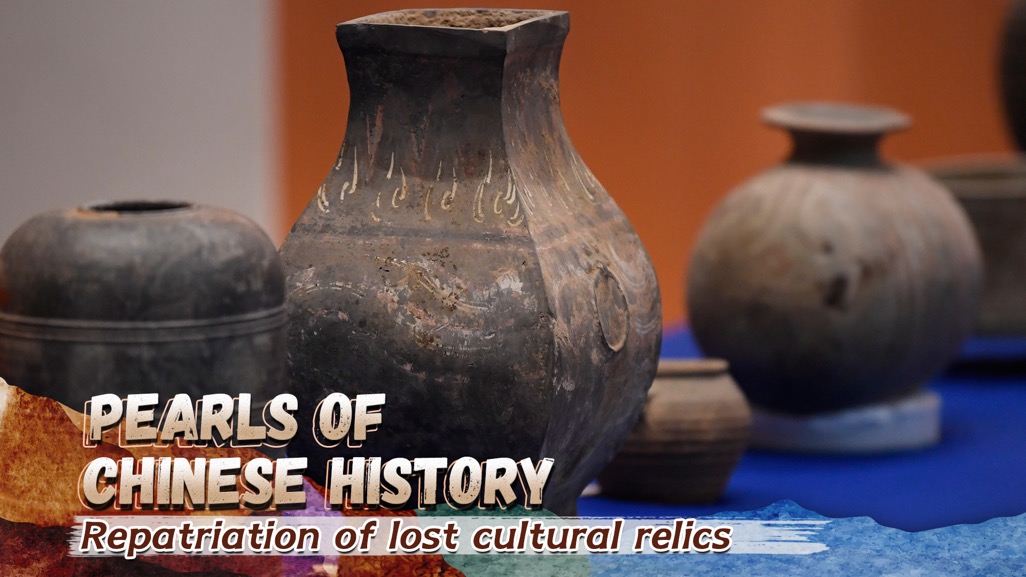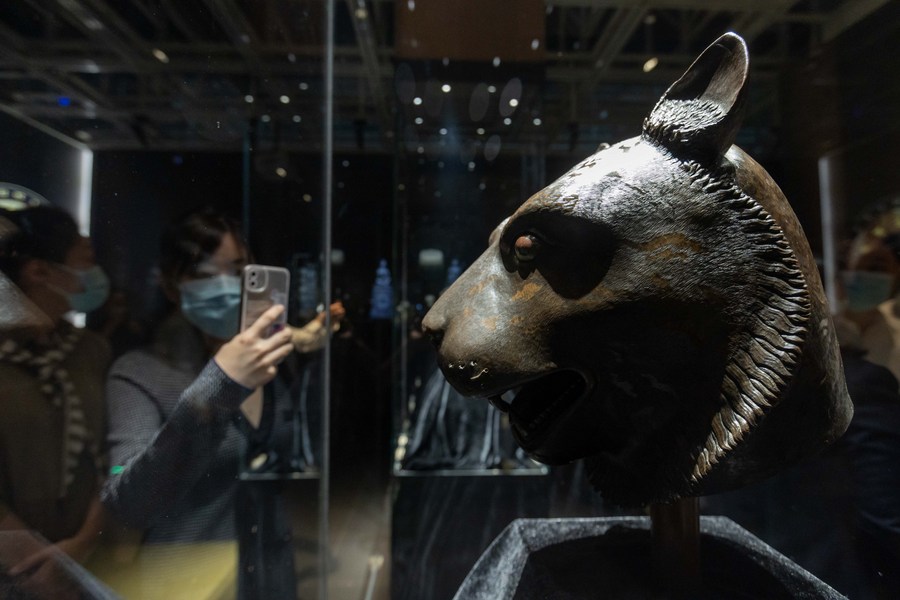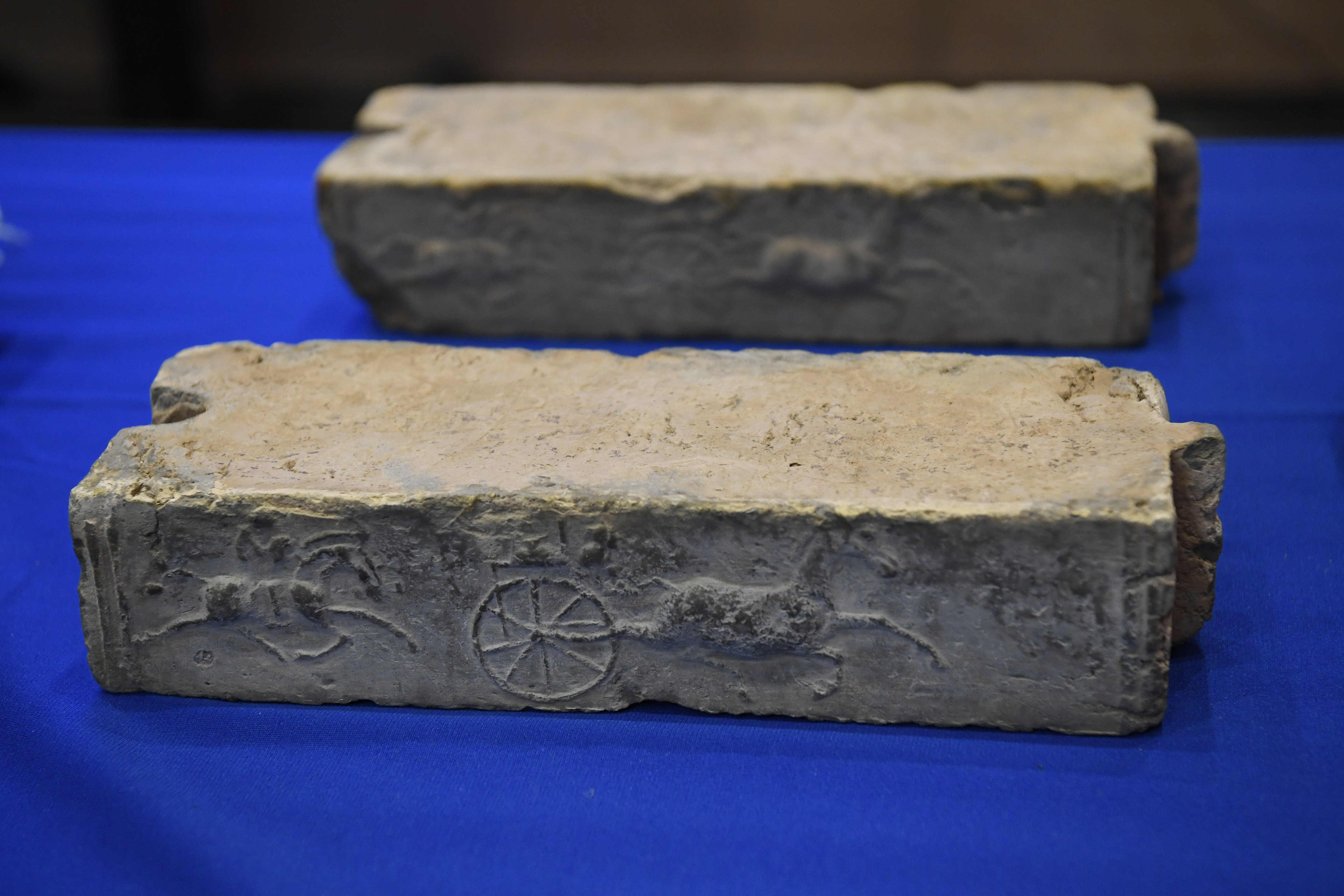
Editor's note: This is the first article of a series covering the repatriation and protection of China's cultural relics. The process of returning these artifacts signifies a restoration of historical narratives, facilitating a comprehensive understanding of a country's past. CGTN will bring you more on this topic.
China's rich cultural heritage spans thousands of years and encompasses numerous ancient artifacts and artworks.
In recent centuries, Western colonialism and illicit trade have caused many significant Chinese cultural relics to be scattered around the world and end up in the possession of foreign institutions and private collectors.
In recent years, China's efforts to search for and seek the return of lost cultural relics have shown results. According to the country's National Cultural Heritage Administration (NCHA), from 1949 to 2019, China facilitated the return of over 300 batches of cultural relics, totaling 150,000 individual pieces.
A history
The Chinese government's dedication to safeguarding national treasures can be traced back to 1950, when it introduced "Interim Measures for Prohibiting the Export of Precious Cultural Relics and Books," the first regulation focused on the protection of cultural relics since the founding of the People's Republic of China.
The regulation includes measures like "all ancient relics buried in the ground or excavated belong to the state," marking the end of a situation where quantities of cultural relics were being stolen and exported to foreign countries.
Since China's economic reform in the 1980s, cultural relics' protection and restoration has rapidly transitioned into a profession. In 1982, the "Law of the People's Republic of China on the Protection of Cultural Relics" was promulgated, aiming to strengthen the protection of cultural relics and promote scientific research in this field.
In 1989, China ratified UNESCO's Convention on the Means of Prohibiting and Preventing the Illicit Import, Export and Transfer of Ownership of Cultural Property. Since then, China has established bilateral agreements with over 20 countries, focusing on combating the illicit transfer of cultural relics and facilitating their repatriation.
In recent years, China has been exploring effective means of reclaiming its lost cultural artifacts through diplomatic negotiations, law enforcement collaboration and civil litigation.
One of the most notable repatriations occurred in 2019, when a collection of 796 Chinese artworks and artifacts was returned to China from Italy. This represents the largest retrieval of lost Chinese cultural relics from abroad since 1998, when roughly 3,000 smuggled artifacts were returned from Britain.
Also in 2019, an eight-piece set of 2,000-year-old bronze relics was brought home from Japan. These relics are among the most sought-after sets that have been recovered and returned to China after their illegal trade on the international market was halted.

A visitor views a bronze tiger head at "Return in Golden Age: China's Retrieved Cultural Relics Exhibition" in east China's Shanghai, September 26, 2022. /Xinhua
A visitor views a bronze tiger head at "Return in Golden Age: China's Retrieved Cultural Relics Exhibition" in east China's Shanghai, September 26, 2022. /Xinhua
In 2020, a bronze horse head sculpture, which was among the most prized treasures of China's Old Summer Palace and had gone missing previously during the looting by Anglo-French allied forces 160 years ago, returned to its original home. It marked the first instance of a lost cultural relic from the Old Summer Palace being returned and housed at its original location.
In May this year, the U.S. returned over 1,000-year-old stone carvings, which were recovered as part of a criminal investigation conducted by the Manhattan District Attorney's Office. These smuggled treasures comprise two stone-carved tomb beds dating back approximately 1,100 to 1,600 years.
Since 2015, the U.S. has returned a total of 404 cultural relics, artworks, and one paleontological fossil to China in five separate batches. This latest return represents yet another successful example of the cooperation between China and the U.S. in the retrieval and repatriation of cultural relics.
The joint efforts will "set up a great example for inter-governmental actions and raise public awareness on the protection of precious cultural heritage," Huang Ping, Chinese Consul General in New York, wrote on his Twitter account.

A photo shows relics during a repatriation event held in the Eiteljorg Museum of Indianapolis, capital city of state of Indiana, the U.S., February 28, 2019. /Xinhua
A photo shows relics during a repatriation event held in the Eiteljorg Museum of Indianapolis, capital city of state of Indiana, the U.S., February 28, 2019. /Xinhua
Why is this important?
"Cultural relics that were seized by Western colonial powers since the Opium War in the 1840s inflicted substantial losses on the countries of origin," said Zhong Weimin, a professor at the Department of History at Tsinghua University.
As they are an integral part of a country's identity and history, removing them results in the fragmentation of a nation's historical narrative. By restoring these cultural relics to their original cultural contexts, it becomes possible to "reconstruct historical narratives" and present a more comprehensive and accurate understanding of human history, according to Zhong.
The repatriation of cultural relics serves as a gesture of goodwill, demonstrating respect for the cultural heritage and sovereignty of the original nation, said Zhong, adding that countries find mutually beneficial solutions that foster cultural understanding and harmony through dialogue and negotiation, which transcend political differences and establish cultural bridges.
However, even though some countries recognize the origins of their treasures as a result of past plunder, they have differing opinions on what should be returned, as the lost cultural relics hold significant value. Consequently, the process of returning cultural relics to their original countries is challenging to some extent, Zhong noted.